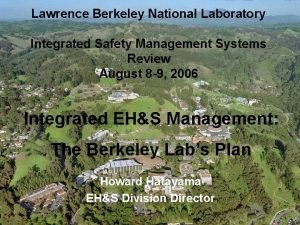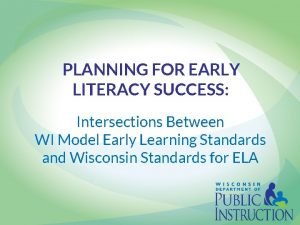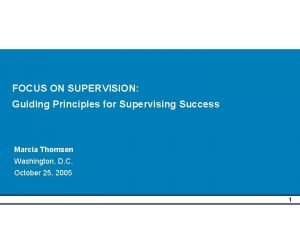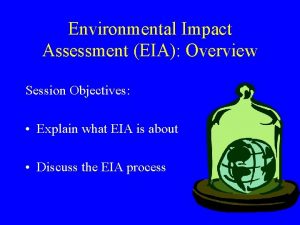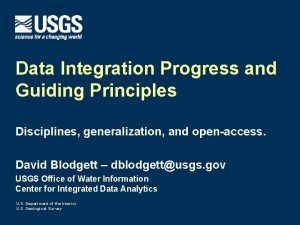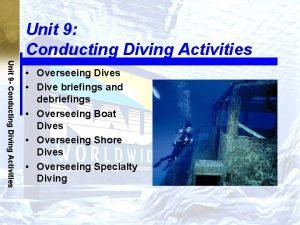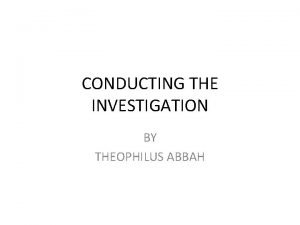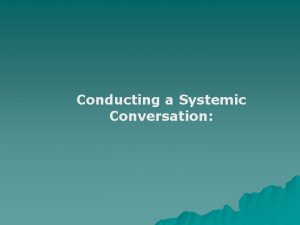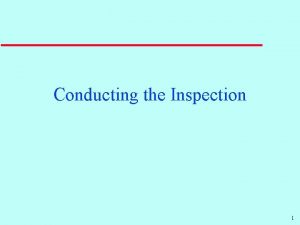Guiding Principles for the Guiding Principles Conducting a

















- Slides: 17

Guiding Principles for the Guiding Principles: Conducting a Successful Self-Evaluation Elizabeth Howard University of Connecticut Julie Sugarman Center for Applied Linguistics

Guiding Principles for Dual Language Education 4 Draft released in 2005, 2 nd edition released December, 2007 4 Based on New Mexico Dual Language Program Standards 4 Prepared by a national panel of researchers, teachers, administrators, and parents 4 Based at the Center for Applied Linguistics 4 Available online at http: //www. cal. org/twi/guidingprinciples. htm 4 Available for purchase at http: //calstore. cal. org/store/detail. aspx? ID=350 2

Dual Language Programs Howard, E. R. , Olague, N. , & Rogers, D. (2003). The dual language program planner: A guide for designing and implementing dual language programs. Washington, DC and Santa Cruz, CA: Center for Research on Education, 3 Diversity & Excellence

Philosophy of the Guiding Principles 4 The principles are based on a vision of education that is − − − Inclusive and equity-focused Student-centered Academically challenging Driven by multiple forms of evidence of student learning Based on shared decision-making (including all stakeholders) 4

Organization of the Guiding Principles 4 Introduction 4 Effective Features of Dual Language Education Programs: A Review of Research and Best Practices, by Kathryn J. Lindholm-Leary 4 Guiding principles − − Strand Principle Key point Indicators 4 Rating templates 5

Strands 4 Assessment and Accountability 4 Curriculum 4 Instruction 4 Staff Quality and Professional Development 4 Program Structure 4 Family and Community 4 Support and Resources 6

Example 7

Understanding the Guiding Principles 4 “Full” implementation represents evidence of best practices, however. . . − No corresponding benchmark for how many “full” or “exemplary” ratings would be needed to be considered an excellent program − No research on how each key point individually adds value to a school’s overall success − Guiding Principles should not be used as a tool for accountability where sanctions are imposed on schools on the basis of ratings 8

Qualities of Exemplary Dual Language Programs 4 The exemplary indicators within each key point emphasize that effective programs are − Process-oriented (processes are established for implementing and reflecting on specific elements of the program) − Reflective (staff analyze and use data and discuss their experiences) − Comprehensive (all stakeholders support the program, receive training, and have a voice in decision-making) − Committed to advocating for dual language education at the district, state, and national level − Supported by human and financial resources 9

Purposes of Self-Evaluation 4 Guide decision-making (hallmark of evaluation as opposed to research) 4 Accountability for non-mandated goals 4 Understand connection between program goals, program implementation and program outcomes 4 Preparation for other activities − External evaluation − Advocacy − Budgeting 4 Documentation of program activities 10

Using the Guiding Principles 4 Step 1: Ratings and Evidence − − Which indicator describes your program’s implementation? What kinds of evidence can you cite to support your ratings? What documentation can you collect to support your evidence? Which stakeholders should you consult to help you find evidence? 4 Suggestions − Be rigorous in your data collection. − At this stage, focus on what you ARE doing, not what you SHOULD or COULD be doing. − Discuss evidence for the indicators above and below where you think you are. − Think about the credibility of the people doing the data collection and analysis, and be sure the team has adequate representation of various viewpoints. − Focus both on areas where the program is strong and where it is weak; this will help in defining priorities later on. 11

Activity 1 What evidence would you want to collect to determine your program’s level of alignment with this key principle? 12

Using the Guiding Principles 4 Step 2: Create an action plan − What goals do you want to set for improving program implementation? − What kinds of activities will meet each goal? − How much can you accomplish in the amount of time you have? 4 Suggestions − Only take on as much as you can reasonably handle. Set explicit due dates and assign responsibilities to be sure that everything gets done. − Write everything down to provide explicit documentation of your thinking. − Involve those who have power to approve activities and funding. 13

Parts of the Action Plan 4 Program component that needs improvement 4 Proposed activity to respond to that need − What is the desired outcome? (i. e. , the evidence of higher level of alignment with the guiding principle or key point) − What additional outcomes might result? (positive or negative) 4 Process − Who is responsible for the activity? − What is the timeline for planning and implementation? 4 Resources needed − What physical/monetary resources will you need? Who will get them? − What additional information do you need to find out? 4 Method for evaluation and reflection − What information will you need to collect in order to evaluate the effectiveness of the activity? 14

Using the Guiding Principles 4 Step 3: Disseminate and implement your plan − Who will want to know what we came up with? − What will be an effective way to share our findings? − How should we plan to evaluate and reflect on our efforts? 4 Suggestions − Show your plan to colleagues at another school to get their feedback and suggestions. − Share both positive and negative findings. − Position findings in terms of providing structural support for change, not making demands on individuals. − GOOD: Bilingual aides will be assigned to cover kindergarten classes half an hour per week for the purpose of joint planning time. − BAD: Marie and Bill need to do a better job coordinating their lessons. 15

Activity 2 4 Looking at Strand 3, Principle 2, Key Point A again, think of one activity that addresses the program component that needs improvement (imagine you have decided your program rates as “partial”). For this activity, answer the following questions: − What is the desired outcome? (i. e. , the evidence of higher level of alignment with the guiding principle or key point) − What additional outcomes might result? (positive or negative) − Who might have to be involved with such an activity? − What resources would be needed? − What additional research might you need to do? − What information will you need to collect in order to evaluate the effectiveness of the activity? 4 If you finish early, think about how your answers might be different if you started at a different rating (minimal or full) 16

Activity 3 4 Working within your school teams, split into two groups – one will focus on Curriculum (Strand 2) and the other will focus on Instruction (Strand 3). 4 Work with your group members to read through all of the principles and key points within your strand make a preliminary rating of your program for each one, following these steps: 4 Step 1: Ratings and Evidence − − Which indicator describes your program’s implementation? What kinds of evidence can you cite to support your ratings? What documentation can you collect to support your evidence? Which stakeholders should you consult to help you find evidence? 17
 Isms guiding principles
Isms guiding principles Madrid guiding principles
Madrid guiding principles Org design guiding principles
Org design guiding principles Priority of sendai framework
Priority of sendai framework Na guiding principals
Na guiding principals Mcpons
Mcpons Project portfolio management guiding principles
Project portfolio management guiding principles Wmels domains
Wmels domains Guiding principles of supervision
Guiding principles of supervision Eight guiding principles of eia
Eight guiding principles of eia Enterprise architecture business and it alignment
Enterprise architecture business and it alignment Chairperson of national steering committee for ncf 2005
Chairperson of national steering committee for ncf 2005 Importance of green management
Importance of green management Integration guiding principles
Integration guiding principles Guiding principles for dual language education
Guiding principles for dual language education Guiding principles for teaching and learning in mtb-mle pdf
Guiding principles for teaching and learning in mtb-mle pdf Borra hål för knoppar
Borra hål för knoppar Smärtskolan kunskap för livet
Smärtskolan kunskap för livet
